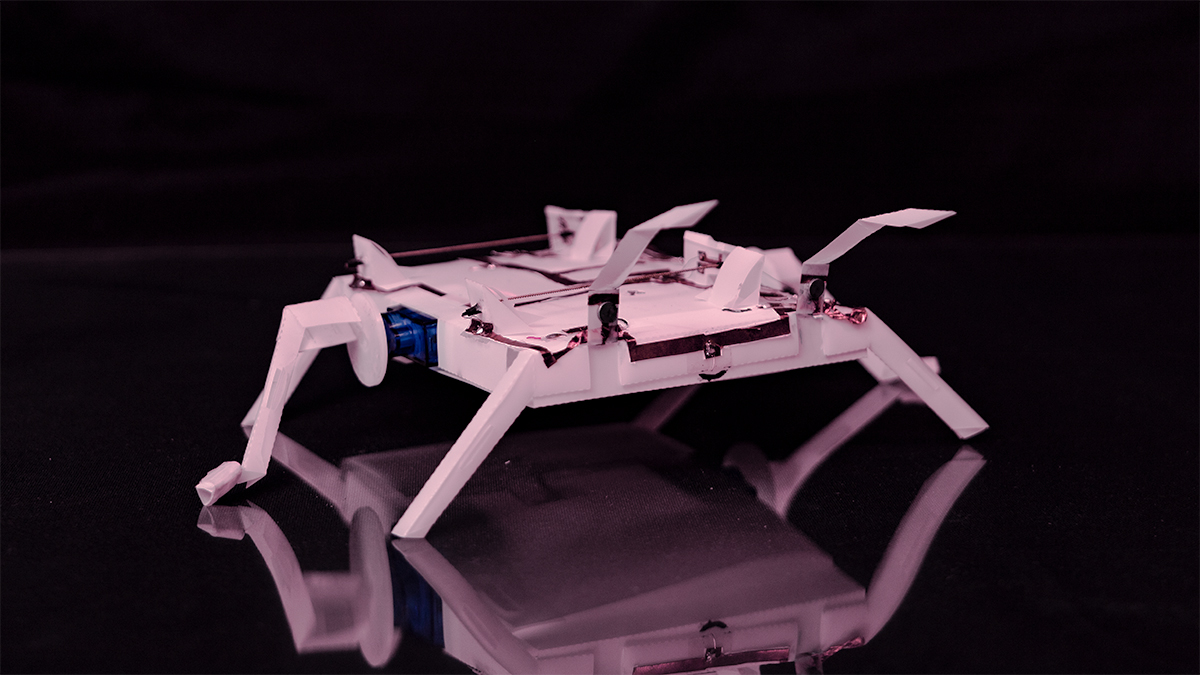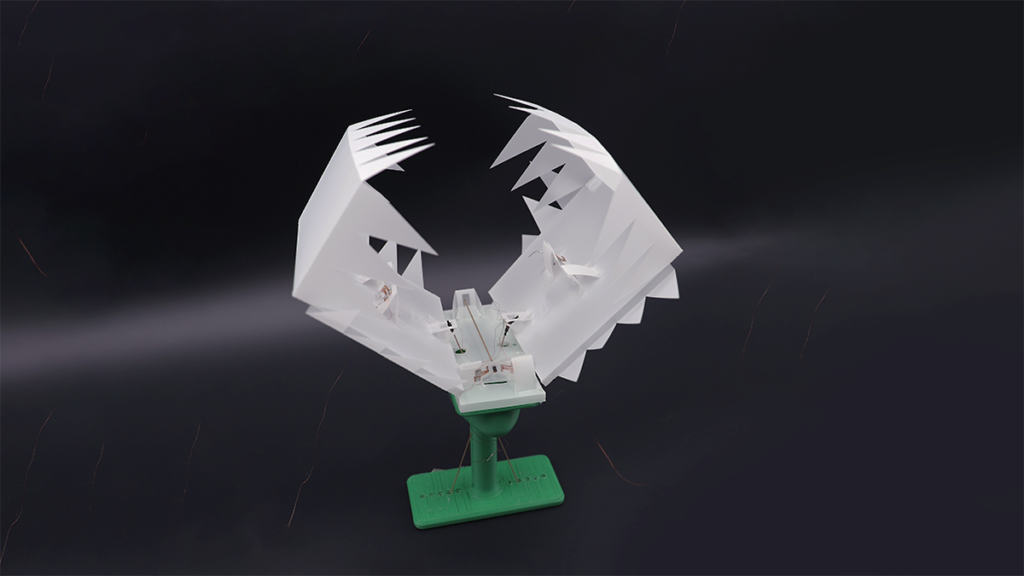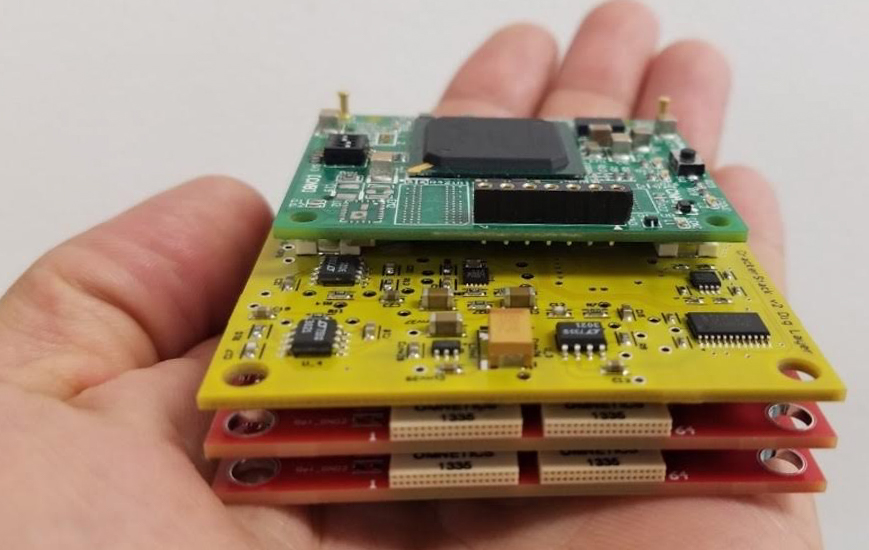Origami MechanoBots introduce new flexibility in robotics research

One of the researchers’ origami robots is pictured. The researchers created robots from materials that allow for a similar range of motion to humans. (Courtesy of Wenzhong Yan)
UCLA researchers have come up with a method to create foldable origami robots that can evaluate and respond to their environment.
Previously, roboticists mainly made only the bodies of these robots by using origami folding methods and then added materials such as silicon-based computer chips for advanced functions, said Wenzhong Yan, a doctoral student in mechanical engineering and lead author of the paper. However, with their newly developed technique, the researchers created Origami MechanoBots, which are self-directed robots that could be made entirely through origami folding without semiconductor-based electronics – cutting down costs, increasing their robustness and simplifying the building process, he added.
M. Khalid Jawed, an assistant professor of mechanical and aerospace engineering, said the robots are unique, as they are made out of materials that mimic human flexibility. He said humans are constantly changing their position, shape and posture, and the researchers were striving for the same range of motion with the origami robots.
To make the robot, the researchers first developed the origami multiplexed switch, which can redirect a flow of electricity based on which way parts of the robot are bent, said Ankur Mehta, an assistant professor of electrical and computer engineering and co-author of the paper.
The switch forms the basis for the robot’s logic gate, a device that outputs electricity if certain rules are met, allowing the robot to interact with its environment, Yan said. Touch signals from the surrounding environment are converted into electrical currents, which drive the actions of the robot, he added.
The researchers built three types of robots with this technique to highlight different capabilities, Mehta said.
Yan said the first robot was modeled after a Venus flytrap and contained two touch sensors. When both of these sensors are activated, the robot can contract around the object using artificial muscles, he added.

A second robot was inspired by the behavior of animals with antennae, like insects, who will reverse their direction when they touch an obstacle, Yan said. He added that the engineers programmed the robot so it will flip its movement backwards when either of its antennae are touched.
The third robot was a car robot that highlighted the reprogrammability of robots made with their technique, Mehta said, adding that they were able to spell out the letters of UCLA with the car’s movement by reprogramming the car’s memory between each letter. Each time the car was reprogrammed, it would follow a preset path that made up one of the letters, he added.
In the future, robots made completely from origami folding techniques could be used as monitoring devices in reactors, since existing robots that have silicon components such as computer chips do not fare well in radioactive environments, Yan said.
Zhaoliang Zheng, a doctoral student in electrical and computer engineering, said the robots can easily react and move accordingly to help assess dangerous situations and save lives. Their small size is a benefit as well as their already-developed motor skills and ability to pick something up and place it down with ease.
Yan added that this ability to function in dangerous environments could also be applied to developing technology for search and rescue missions. Additionally, because their robots do not react to magnetic fields, they could be used to aid health care professionals in MRI machines, he said.
In the future, robots made with this technique could also be sent into space, Yan said, adding that deploying electronics into space is difficult because of the high amounts of radiation there.
Yan said the engineers are currently exploring ways to make the design and fabrication process for these robots automatic, which would allow for more sophisticated robots, such as those that could change their behavior as their environments change. The team is also looking at ways to design the robot to do more complicated tasks, such as real-time decision-making, he added.
Roboticists have begun to recognize the versatility of origami robots, Jawed said, adding that he believes they could change the world. Their efficiency and broad versatility can make them powerful tools in the realms of science or government and in everyday lives, he said.
Jawed said the robots can be used to solve engineering problems through modeling, but more surprisingly, they also have applications in the film industry and are currently used in movie CGI. They reflect complex physics models that allow for advanced and mathematically based effects development in studios like Walt Disney and Pixar, he added.
Mehta said these robots could additionally serve an educational purpose because they can be made with materials costing less than a dollar, while traditional robotics kits can cost around a hundred dollars.
“’I’d love to see this being used by educators, not just by researchers,” Mehta said. “Let’s get more students using this platform to … come up with new designs that really communicate what we’re thinking and we want to show off to the world.”




